Poison Hemlock
Information
Conium maculatum - Apiaceae Family - Biennial
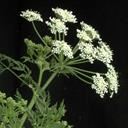
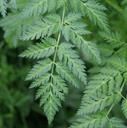
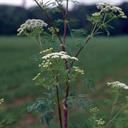
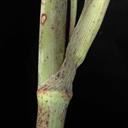
Identification
- Flowers: Small, white flowers found in umbrella-like clusters.
- Seeds: Long, barrel-shaped, ribbed, 1/8 inches long.
- Leaves/Stems: Triangular, lacey fern-like leaves. Stems are ribbed, green with purple spots, and hollow.
- Flowering Time: Biennial and doesn’t flower until the second year. After the first year, flowers appear June – August.
- Life cycle/Other: Flower stems persist through the winter, allowing for a long seed dispersal period (from September through February). This plant is often mistaken for wild parsnip or wild carrot.
Impacts
- Toxic to humans, wildlife, and livestock, affecting the central nervous and reproductive systems. Sensitive people may experience contact dermatitis when handling this plant.
- Invades rangelands, pastures, roadsides, and cultivated fields, reducing forage for livestock and wildlife.
- Poison hemlock reproduces solely via seed. One plant may produce up to 30,000 seeds, which remain viable for 3-6 years.
Control
Most effective control methods
- Hand pulling is the most effective method of controlling small infestations. Protective clothing should be worn when working in areas with this weed, and inhalation of plant particles should be minimized.
- Minimize soil disturbance, which encourages further germination of seeds at infested sites. Plowing or repeated mowing of newly germinated plants will prevent Poison hemlock from reestablishing.
- For larger infestations, broadleaf selective herbicides such as 2,4-D and triclopyr are most effective when used on seedlings or small rosettes. Herbicides are not effective on fully mature plants.
Control methods and timing
| March | April | May | June | July | Aug | Sept | Oct |
|---|---|---|---|---|---|---|---|
|
Prev Mech Chem |
Prev Mech Chem |
Prev Mech |
Prev Mech |
Prev Mech |
Prev Mech |
Prevention (Prev) Monitor and destroy new plants before seed production.
Mechanical (Mech) Hand pulling, digging, cutting, mowing and tilling.
Cultural (Cult) Biological control agents, livestock grazing, and revegetation practices.
Chemical (Chem) Selective herbicides based on the plant and the specific location. Check our weed fact sheets for specific control information.
Large Images
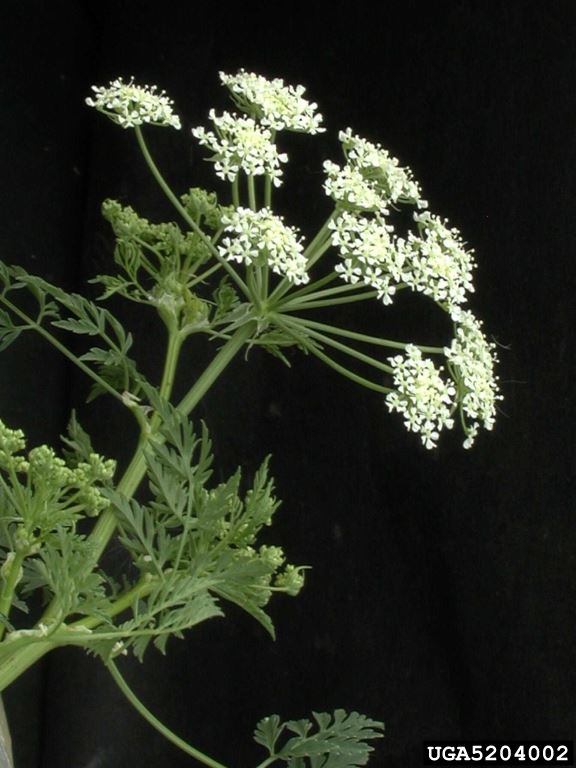
Poison hemlock: flower
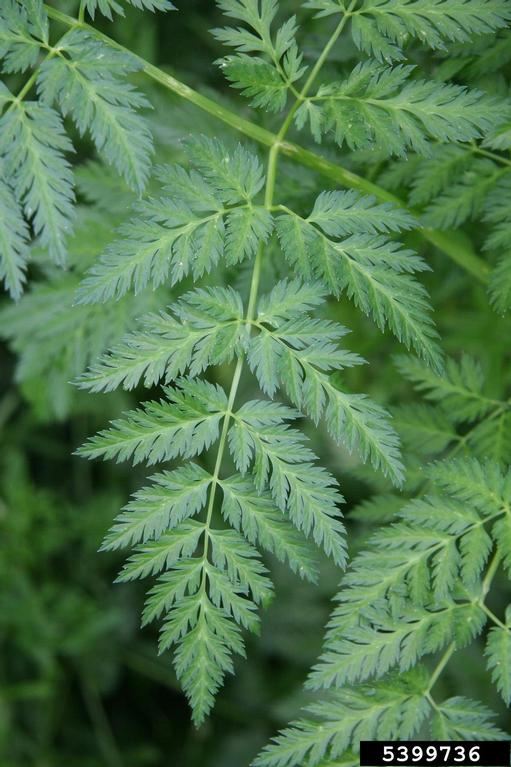
Poison hemlock: foliage
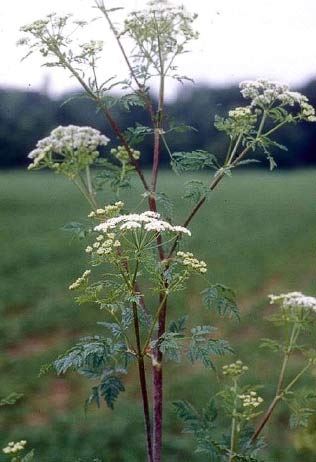
Poison hemlock
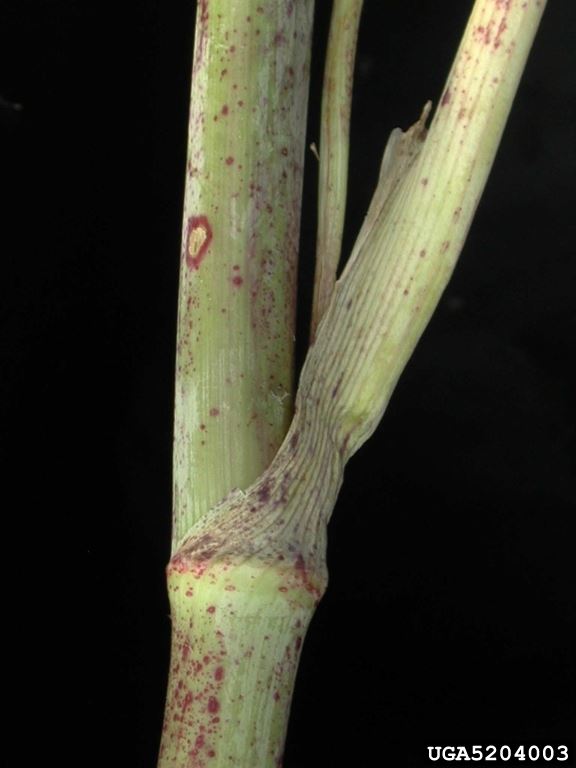
Poison hemlock: stem
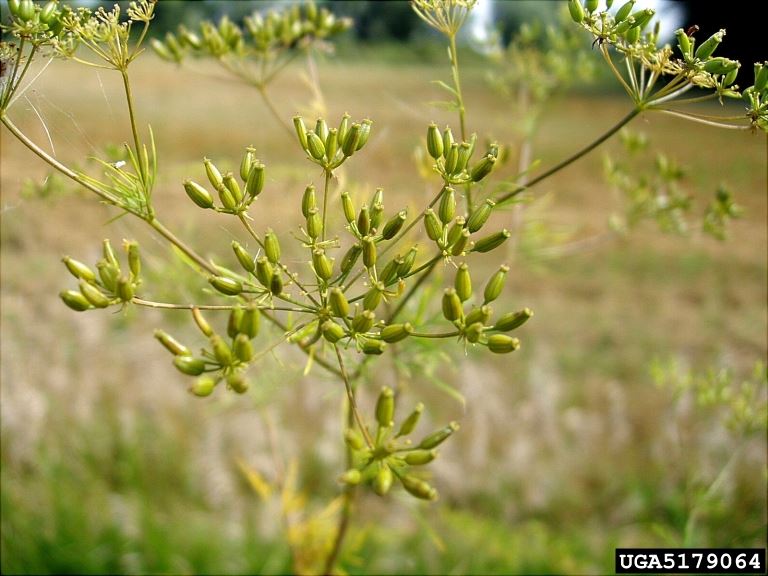
Poison hemlock: fruits
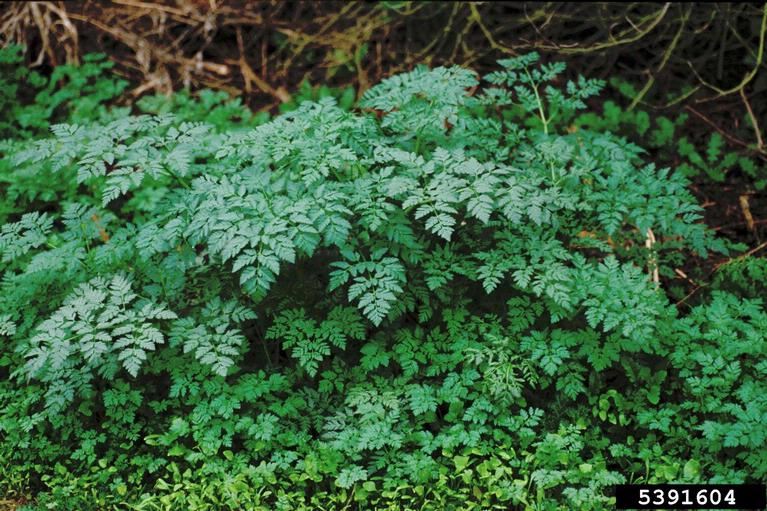
Poison hemlock: infestation
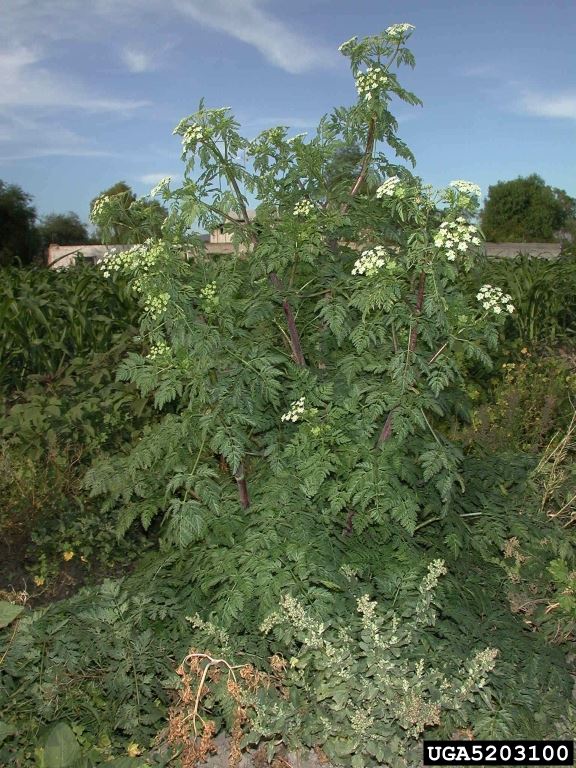
Poison hemlock
Resources
-
-
References
Drewitz, J. IPCW plant report: Conium maculatum. Retrieved from https://www.cal-ipc.org/resources/library/publications/ipcw/report32/
Eubank, E., & Rathfon, R. (2012, July). Poison hemlock [PDF file]. Retrieved from https://www.extension.purdue.edu/extmedia/fnr/fnr-437-w.pdf View PDF
Reeves, K. (2010). Exotic species: poison hemlock. Retrieved from https://www.nps.gov/articles/poison-hemlock.htm
United States Department of Agriculture. (2015, February). Field guide for managing poison hemlock in the Southwest [PDF file]. Retrieved from https://www.fs.usda.gov/Internet/FSE_DOCUMENTS/stelprdb5410121.pdf View PDF
United States Department of Agriculture: Agricultural Research Service. (2018, June 26). Poison hemlock (conium maculatum). Retrieved from https://www.ars.usda.gov/pacific-west-area/logan-ut/poisonous-plant-research/docs/poison-hemlock-conium-maculatum/
University of California Statewide Integrated Pest Management Program. (2013, January). Poison hemlock. Retrieved from http://ipm.ucanr.edu/PMG/PESTNOTES/pn74162.html




